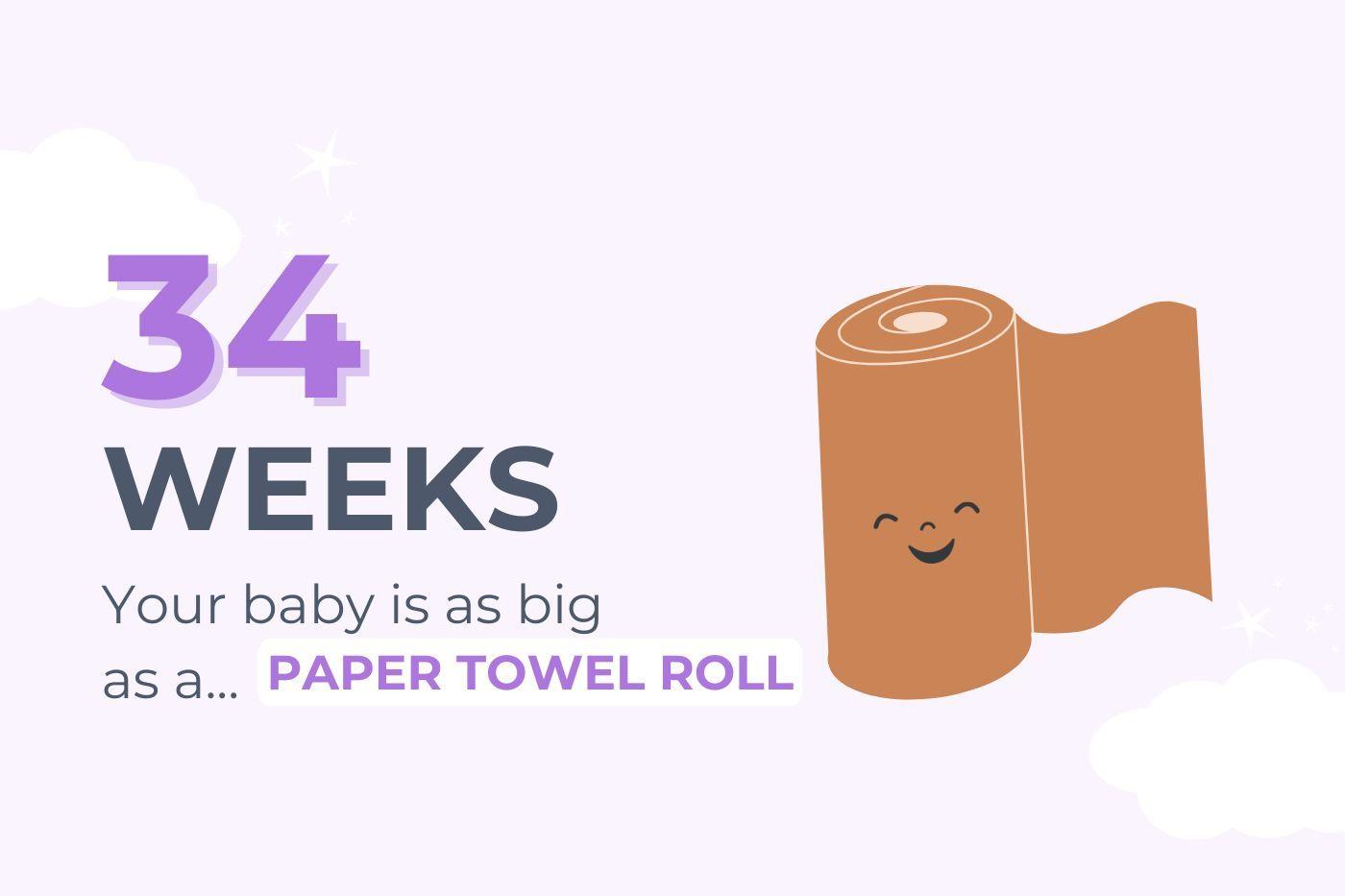PREGNANCY
34 Weeks Pregnant: A Guide to Your Discharge
Your baby is sleeping, sucking and slurping...and you might even see her kicking in your belly!

Written by
Dr. Harvey Karp

SHARE THIS ARTICLE
PARENT PICKS
Bestsellers
PREGNANCY

Written by
Dr. Harvey Karp

SHARE THIS ARTICLE
Bestsellers
By now, most of your bump is baby—almost 2.3 kilograms of them! That means every wiggle and kick is on display. Can you spot those little feet pressing against the top of your belly? Most babies are now in the typical head-down position, readying for birth. (Only around 5% of babies remain breech—bottom or feet first.) At this stage, your baby’s body is well prepared, and babies born this week have a 99% survival rate.
Your baby spends their days sleeping, practising sucking, and swallowing gulps of amniotic fluid—flavoured with whatever you last ate! Their skin is coated with a thick, waxy layer called vernix. While most of it will shed before birth, babies born early often arrive still covered in it. Vernix protects your baby’s skin from months of soaking in amniotic fluid—and it even offers antimicrobial benefits after birth.
Your baby is about the size of a kitchen roll (and you’ll be going through plenty of those in the toddler years!).
At 34 weeks pregnant, you’re roughly 7 and a half months along.
You’re getting close to the finish line!
In just three weeks, your baby will be considered “at term” (no longer premature). One sign your body is gearing up may be a little leakage of colostrum. This concentrated early milk is a powerhouse—thick, yellowish-orange (thanks to its Vitamin A content), and rich in antibodies, protein, and infection-fighting white blood cells. No wonder it’s sometimes called “liquid gold.”
It’s normal to notice more discharge as pregnancy progresses. That’s your cervix creating extra mucus to help keep bacteria out. If you see pink, jelly-like discharge, you may be losing your mucus plug—the seal that’s been protecting your womb. It may come out in one clump or bit by bit.
Losing the plug means your cervix is softening and labour is approaching…though it could still be weeks away. Some parents even regrow their mucus plug. However, if your discharge is tinged with blood (often called the “bloody show”), labour is likely to be close. If it’s yellow or green, ring your midwife or doctor—this could signal an infection that needs treatment.
You may notice:
“Heartburn means your baby will be born with a full head of hair.”
It sounds like an old wives’ tale, but research shows there may be truth to it! The same hormones that trigger heartburn also influence your baby’s hair growth.
The most important thing she’d learned over the years was that there was no way to be a perfect mother and a million ways to be a good one. — Jill Churchill
Disclaimer: The information on our site is NOT medical advice for any specific person or condition. It is only meant as general information. If you have any medical questions and concerns about your child or yourself, please contact your health provider. Breastmilk is the best source of nutrition for babies. It is important that, in preparation for and during breastfeeding, mothers eat a healthy, balanced diet. Combined breast- and bottle-feeding in the first weeks of life may reduce the supply of a mother's breastmilk and reversing the decision not to breastfeed is difficult. If you do decide to use infant formula, you should follow instructions carefully.